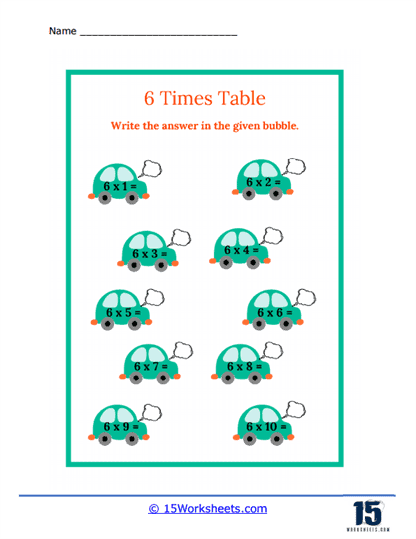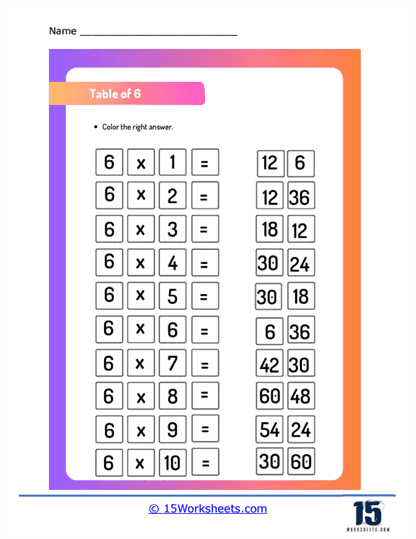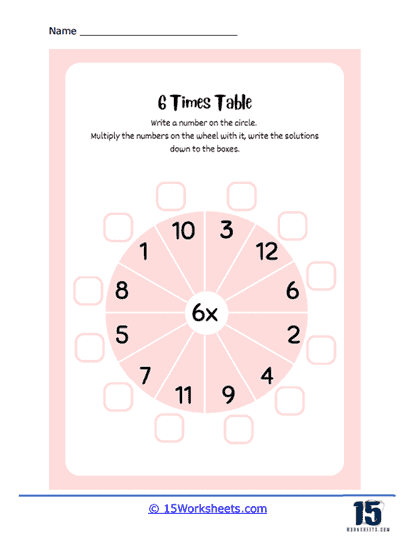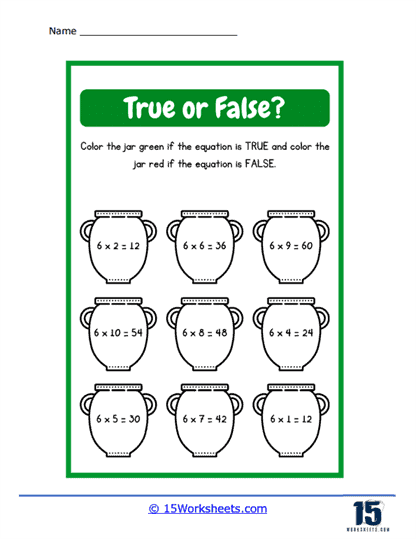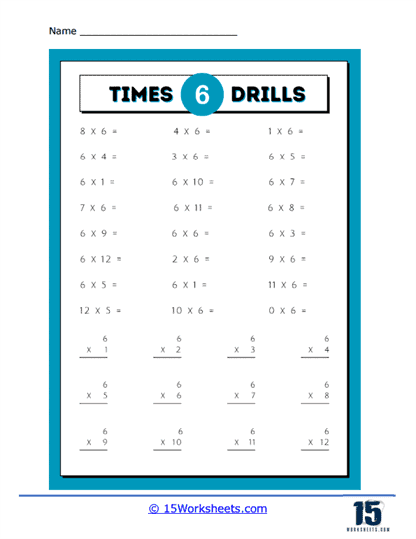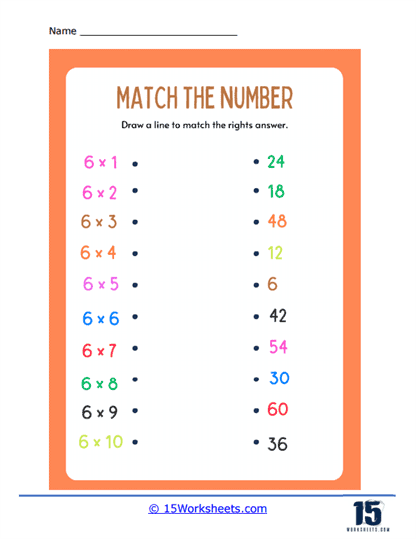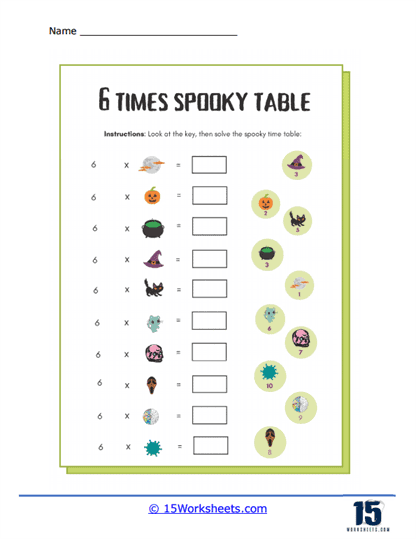6 Times Tables Worksheets
About These 15 Worksheets
To start with, let’s picture a scenario. Imagine you have a carton of eggs, and each carton holds 6 eggs. If you have one carton, you possess 6 eggs. With two cartons, you have 12 eggs. With three cartons, it’s 18 eggs, and so on. This is the concept behind the 6 times tables.
A 6 times table worksheet is a learning tool that offers various problems and exercises centered around multiplying numbers by 6. It’s like a playground for young learners to familiarize themselves with the patterns, rhythms, and characteristics of the number 6 in multiplication. Such worksheets offer invaluable practice, helping students grow confident in their multiplication skills, particularly concerning the number 6.
Types of Problems Found on These Worksheets
Direct Multiplication Problems – Here, the students directly multiply numbers by 6.
Example: 6 × 4 = ?
Solution: Think of it as 4 cartons of eggs, with 6 in each. You have a total of 24 eggs. So, 6 × 4 = 24.
Fill in the Blanks – These encourage students to recognize patterns and complete sequences.
Example: 6 × ___ = 36
Solution: Consider how many sets of 6 get you to 36? It’s 6 sets, or 6 × 6. Thus, the blank should be filled with the number 6.
Multiple Choice Questions – This familiar format offers a choice of answers, fostering decision-making.
Example: What is 6 × 7?
a) 40
b) 42
c) 45
Solution: Multiplying in sequence, 6 times 7 equals 42. So, the correct choice is b) 42.
Matching Problems – These problems are great for visual learners. On one side are multiplication problems and on the other, their answers.
Example:
6 × 5 ……. 35
6 × 3 ……. 18
Solution: Match “6 × 5” with its correct answer (30) and “6 × 3” with its corresponding result (18).
Division Queries (Reverse Multiplication) – Understanding that division is the inverse of multiplication is essential. These problems reinforce this concept.
Example: 48 ÷ 6 = ?
Solution: If you distribute 48 stickers evenly into sets of 6, you’ll create 8 sets. Thus, 48 ÷ 6 = 8.
Illustrative Problems – Visual representations can be extremely helpful for some students.
Example: Draw 5 groups, each with 6 stars. How many stars in total?
Solution: After sketching, counting the stars will reveal a total of 30. So, 6 times 5 is 30.
Application Problems – These problems apply multiplication knowledge to real-world situations.
Example: If each box has 6 toys and you’re packing 8 boxes for a charity event, how many toys are you donating?
Solution: Multiply the number of toys by the number of boxes. So, 6 times 8 equals 48 toys.
For Reference: The 6 Times Table
0 x 6 = 0
1 x 6 = 6
2 x 6 = 12
3 x 6 = 18
4 x 6 = 24
5 x 6 = 30
6 x 6 = 36
7 x 6 = 42
8 x 6 = 48
9 x 6 = 54
10 x 6 = 60
11 x 6 = 66
12 x 6 = 72
13 x 6 = 78
14 x 6 = 84
15 x 6 = 90
16 x 6 = 96
17 x 6 = 102
18 x 6 = 108
19 x 6 = 114
20 x 6 = 120





